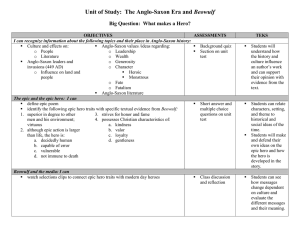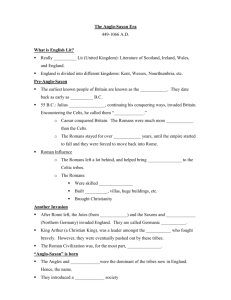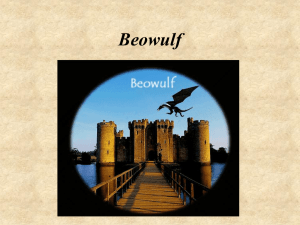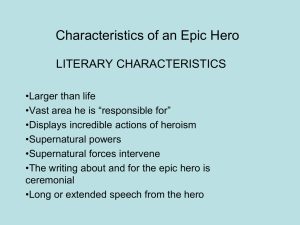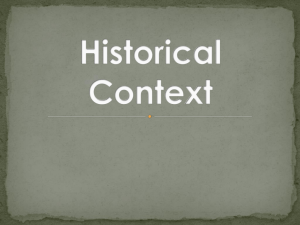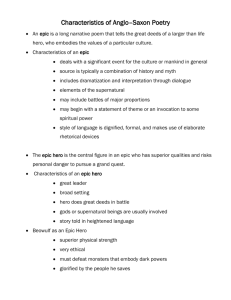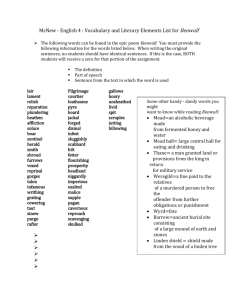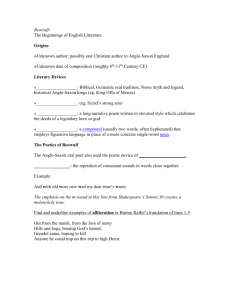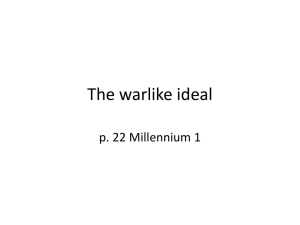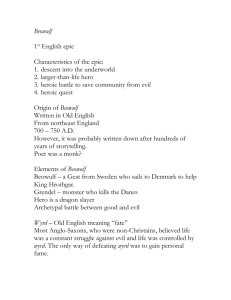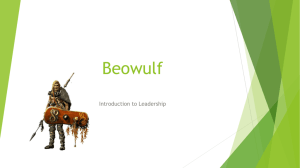Unit of study: The Anglo-Saxon era and Beowulf
advertisement
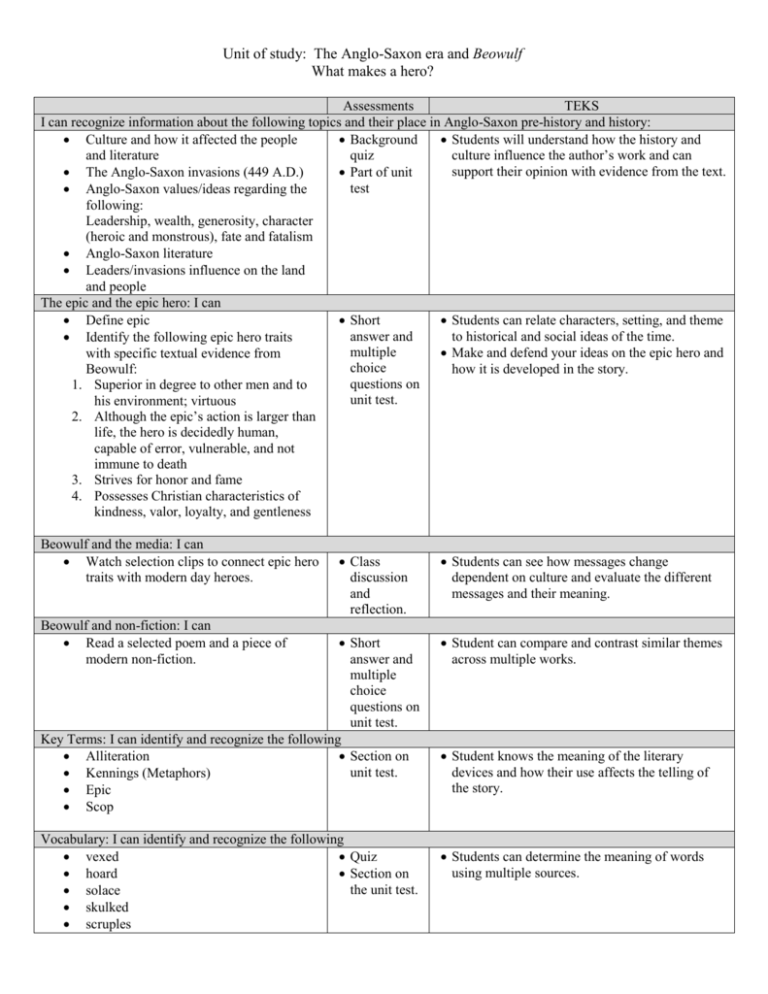
Unit of study: The Anglo-Saxon era and Beowulf What makes a hero? Assessments TEKS I can recognize information about the following topics and their place in Anglo-Saxon pre-history and history: Culture and how it affected the people Background Students will understand how the history and and literature quiz culture influence the author’s work and can support their opinion with evidence from the text. The Anglo-Saxon invasions (449 A.D.) Part of unit test Anglo-Saxon values/ideas regarding the following: Leadership, wealth, generosity, character (heroic and monstrous), fate and fatalism Anglo-Saxon literature Leaders/invasions influence on the land and people The epic and the epic hero: I can Define epic Short Students can relate characters, setting, and theme answer and to historical and social ideas of the time. Identify the following epic hero traits multiple Make and defend your ideas on the epic hero and with specific textual evidence from choice Beowulf: how it is developed in the story. questions on 1. Superior in degree to other men and to unit test. his environment; virtuous 2. Although the epic’s action is larger than life, the hero is decidedly human, capable of error, vulnerable, and not immune to death 3. Strives for honor and fame 4. Possesses Christian characteristics of kindness, valor, loyalty, and gentleness Beowulf and the media: I can Watch selection clips to connect epic hero traits with modern day heroes. Class discussion and reflection. Beowulf and non-fiction: I can Read a selected poem and a piece of modern non-fiction. Short answer and multiple choice questions on unit test. Key Terms: I can identify and recognize the following Alliteration Section on unit test. Kennings (Metaphors) Epic Scop Vocabulary: I can identify and recognize the following vexed Quiz hoard Section on the unit test. solace skulked scruples Students can see how messages change dependent on culture and evaluate the different messages and their meaning. Student can compare and contrast similar themes across multiple works. Student knows the meaning of the literary devices and how their use affects the telling of the story. Students can determine the meaning of words using multiple sources.

